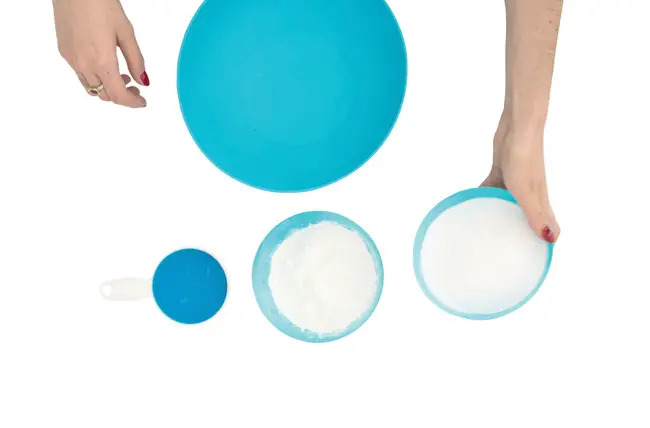Heed these tips from the American Academy of Orthopaedic Surgeons on how to keep you and your children injury-free while shoveling snow, snowblowing, sledding, and playing outdoors this winter.
With all of the snowy weather hitting the Northeast this winter, many people can expect at least a few more snow days from work and school. While kids play and sled in the snow, parents will focus on the vigorous task of snow removal. The American Academy of Orthopaedic Surgeons (AAOS) offers advice to keep you and your children injury-free while participating in winter activities.
Snow Shoveling & Snowblowing
AAOS Expert Advice: “Shoveling snow involves a lot of bending and heavy lifting, particularly in wet, heavy snow,” said Michael F. Schafer, MD, orthopaedic surgeon at Northwestern Memorial Hospital in Chicago and spokesperson for the AAOS. “It may be especially vigorous for people who do not regularly exercise, as their backs, shoulder and arm muscles may not be prepared for that level of activity.”
Shoveling/SnowblowingSafety Tips:
- Clear snow early and often. Begin when a light covering of snow is on the ground to avoid trying to clear packed, heavy snow.
- Use a shovel that is comfortable for your height and strength. Do not use a shovel that is too heavy or too long for you. Consider buying a shovel that is specially designed to prevent too much stooping. Space your hands on the tool grip to increase your leverage.
- Push the snow instead of lifting it, as much as you can. If you must lift, take small amounts of snow, and lift it with your legs: Squat with your legs apart, knees bent and back straight. Lift by straightening your legs, without bending at the waist. Then walk to where you want to dump the snow; holding a shovelful of snow with your arms outstretched puts too much weight on your spine.
- Do not throw the snow over your shoulder or to the side. This requires a twisting motion that stresses your back.
- Never stick your hands or feet in the snow blower! If snow becomes impacted, stop the engine and wait at least five seconds. Use a solid object to clear wet snow or debris from the chute. Beware of the recoil of the motor and blades after the machine has been turned off.
Sledding
AAOS Expert Advice: “It’s so important for participants to stay alert and to take breaks when they are feeling overly tired from sports like skiing, sledding or snowboarding,” said Thomas J. Nordstrom, MD, orthopaedic surgeon at the Center for Orthopaedic Care in New Jersey and AAOS spokesperson. “To avoid winter sports injury, people should keep their body as warm as possible, be in good shape, and follow the rules of the sport.”
Sledding Safety Tips:
- Avoid sledding near or on public streets. Sledding should be done only in designated and approved areas where there are no obstacles in the sledding path. Speeding down hills in parks that are not designed for sledding puts you at risk to be hit by cars and trucks or slam into parked vehicles, curbs, and fences.
- Sit in a forward-facing position when sledding and steer using your feet or the rope steering handles for better control of the sled. Urge children to wear a helmet while sledding.
- Parents or adults must supervise children in sledding areas to make sure the sledding path is safe and there are not too many sledders on the hill at the same time (or at the end of the run) to avoid collisions.
- Be sure to carry a cell phone in case an emergency arises, and call for help if needed.
General Winter Safety
AAOS Expert Advice: “It takes only minutes for exposed skin to become frostbitten if the temperature falls below 20 degrees Fahrenheit and the wind is blowing at 20 miles per hour or more,” said Rachel Rohde, MD ,orthopaedic surgeon at the William Beaumont Hospital in Michigan and spokesperson for the AAOS. “Your hands, fingers, feet, toes, and ears are especially susceptible, so you need to take special care protecting them.”
Winter Safety Tips:
- Dress appropriately. Light, layered, water-repellent clothing provides both ventilation and insulation. It also is important to wear the appropriate head coverings, as well as mittens or gloves and thick, warm socks. Take a break if you feel yourself getting too hot or too cold.
- Check the weather for snow and ice conditions prior to participating. Pay attention to warnings about upcoming storms and severe drops in temperature to ensure safety while outdoors. Skiers, sledders and snowboarders should make adjustments for icy conditions, deep snow powder, wet snow, and adverse weather conditions.
- Avoid frostbite:
- Protect your head, hands and feet. Substantial heat loss occurs through the scalp, so head coverings are vital. Mittens are warmer than gloves, and two pair of socks (wool over lightweight cotton) will help keep your feet warm.
- Don’t drink or smoke before going out into the cold. If you plan on being out in the cold for a prolonged period, don’t drink or smoke. Alcohol, caffeine and nicotine leave the skin more prone to thermal injury.
- If you get wet, get inside! Remove wet clothing as quickly as possible.
- Check yourself every half-hour or so for signs of frostbite. If your toes, fingers, ears or other body parts feel numb, get inside.
Also see: Don’t Let a Snow Forecast Also Forecast Your Heart Attack
Protecting Kids from the Dangers of the Cold




















